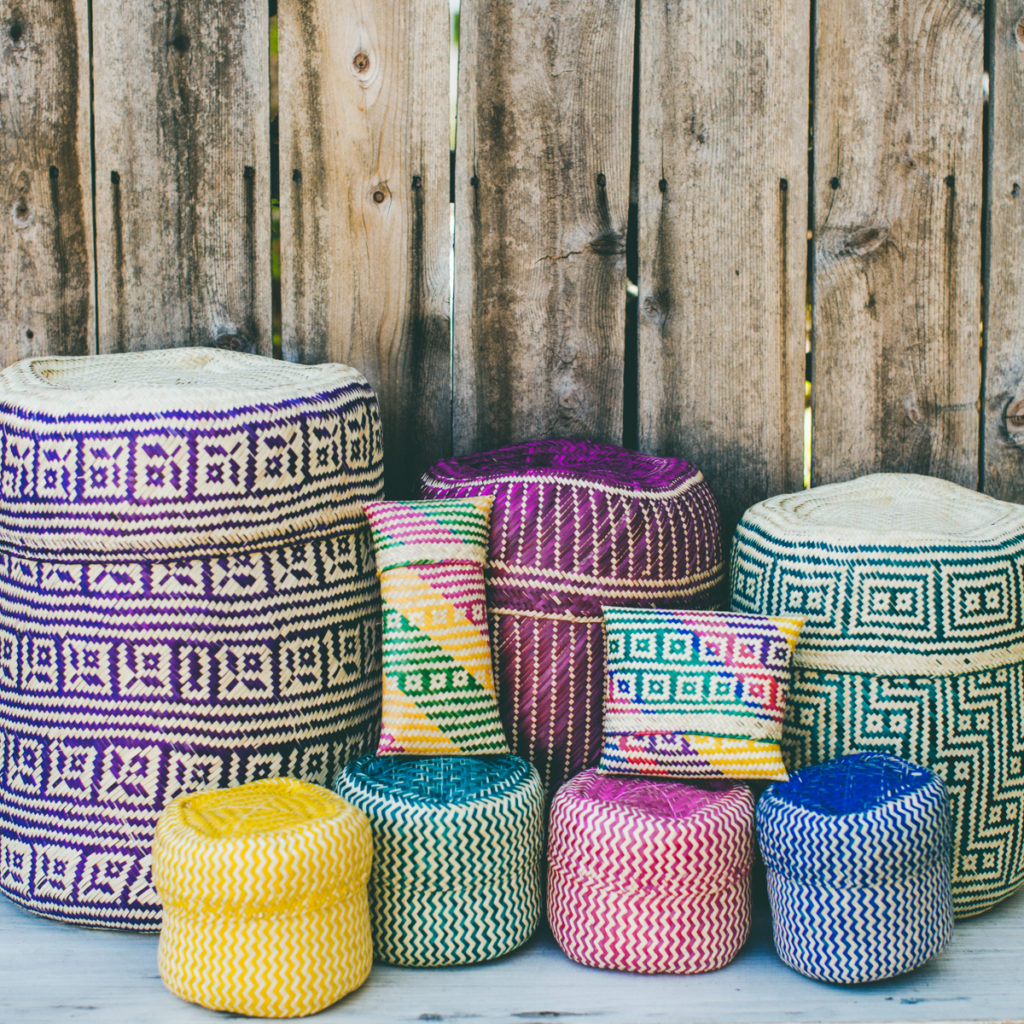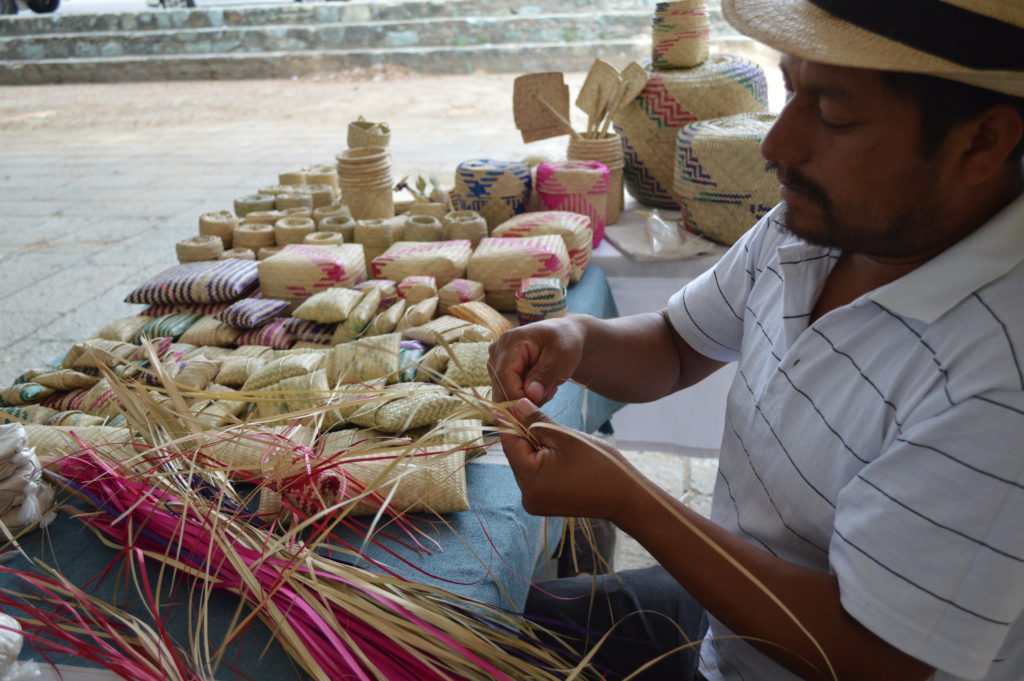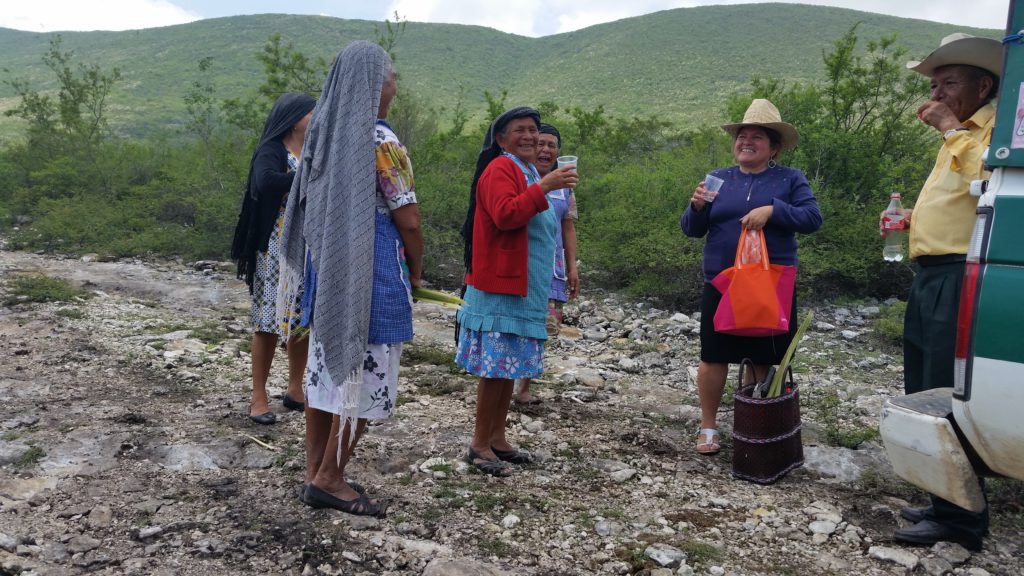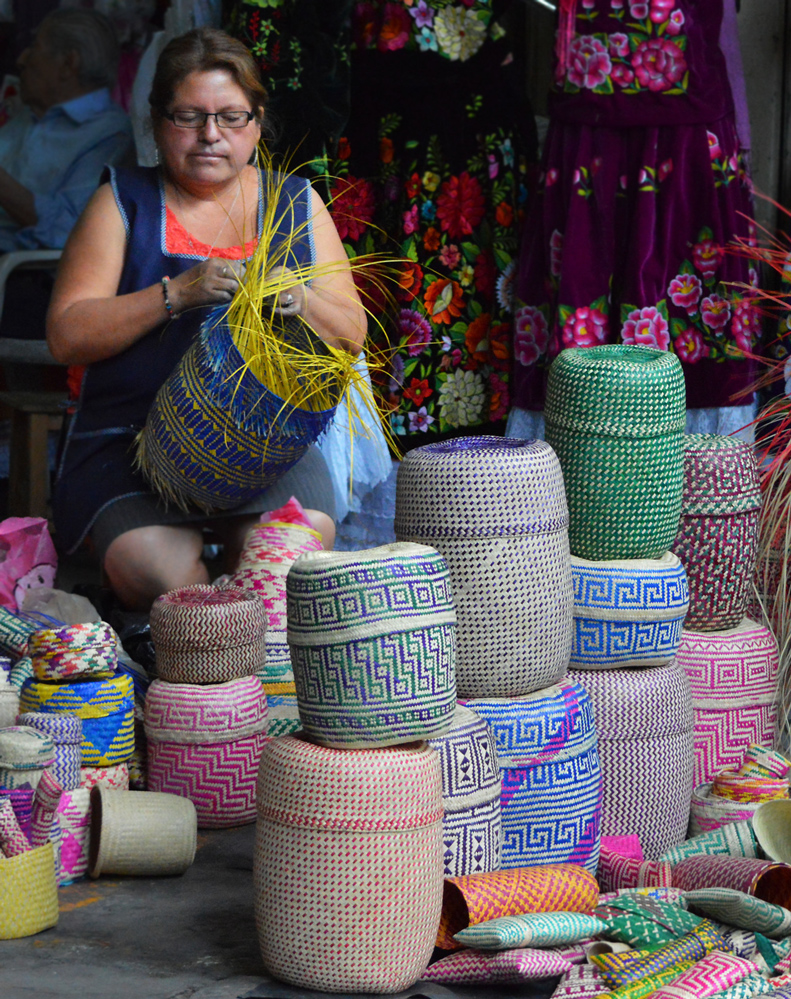Two years ago, a woman was traveling across Mexico in search of partners for a new US company. The purpose of the company was to help artisans access the global market. In the bustling marketplace of Oaxaca, Mexico, she met a woman named Marina. Together, Marina and two other artisans created what is now the GlobeIn signature item – palm woven baskets.

THE ORIGIN OF THE PALM LEAF BASKET
Known as tenátes in their hometown, these baskets hold hot tortillas (flat corn or flour bread) at mealtimes. At GlobeIn, the hand-woven palm leaf baskets house each month’s selection of globally sourced fair trade goods.
The people of Mexico have been weaving baskets since colonial times when walking was a popular mode of transport. Each basket takes roughly three hours to produce and people would weave as they walked, using the production of baskets as a measurement of time. If they wove two baskets between towns, then they knew the towns were six hours apart.

GLOBEIN’S SIGNATURE BASKET
GlobeIn baskets are sourced from three artisan groups. Some of the artisans live in the countryside along dirt roads that flood after heavy rain, making it difficult to get goods to the city. Read more about our artisan groups and the process of creating each basket here.
Pamela Chavez, GlobeIn’s artisan liaison in Mexico, works directly with the artisans to ensure quality and prompt shipments. She says GlobeIn baskets are higher quality and more diverse than baskets found in the Oaxaca marketplace.
“Marina and her husband are always asking weavers to invest time into making each basket beautiful,” says Pamela. Marina Lopez Antonio, in charge of managing two of the weaving groups, asks artisans to adopt a quality over quantity standard for GlobeIn’s baskets.
The differences and effect is mutual. After seeing photos of the baskets on social media, the artisans have also started using palm baskets for things other than tortillas. For example, Marina uses the baskets for storing her textiles, another business she manages in addition to GlobeIn.
WHO ARE THE WEAVERS?
Pamela raves about the talent of the Oaxaca artisans. When GlobeIn customers asked for new basket designs, Pamela sent the request out to the artisans for their best. The artisans sent her baskets of all different colors and patterns, ten of which were selected for new GlobeIn basket designs. Samples are sent to each artisan, who replicate the pattern without any additional training.
In other parts of Mexico, artisans use a bowl or other tools to create different shaped baskets and patterns, but not in Oaxaca. “The artisans just get an idea and do it,” says Pamela, noting that all of this creativity and learning takes place without Internet, books, or even cell phone service. She also notes that this can-do attitude is a result of the poverty of the people in this area. If they need to get something done, they just figure it out.
KEEPING A TRADITION ALIVE
Today, 45 artisans help create GlobeIn’s signature palm woven baskets, producing over 3,000 baskets every month for GlobeIn customers. From sending their children to school to building new homes, the artisans have improved their lives through this income. Pamela notes that selling woven goods in the Oaxaca marketplace alone does not generate sufficient income for these artisans and their families.
In San Luis Amatián, the population has declined as people move to the city for work. Pamela worries what will happen to these towns if younger generations don’t return. Ranging in age from 23 to 72-years-old, being part of the GlobeIn weaving group allows female weavers to stay at home and earn income that would otherwise be impossible given their age or situation. The artisans are also keeping the tradition of weaving alive and hope to pass this tradition on to more weavers.
Don Juan, head of one weaving group that live 7-8 hours travel distance from Oaxaca city, has twelve more artisans waiting to be trained and join the GlobeIn production team. Pamela said the best they can do is to hope for more orders and expand the team to help make a difference for as many artisans as possible.
SETTING A POSITIVE EXAMPLE
Before GlobeIn, Marina was living with her parents and unmarried. At her age, living in a small traditional town, it is very unusual for a woman to be unmarried and without children. Marina felt unsuccessful.
Now, Marina manages the artisans with her husband as support. The couple live together in a house built with money earned from GlobeIn. They also hope to save up enough money to get married soon, noting that weddings are very big events in their town, and they may be saving for a while before the big date.
One of the newest and youngest members of the GlobeIn weaving cooperative, Cecilia, was introduced to Marina through friends. She works independently, but told Pamela she was inspired by Marina’s success. One day Cecilia called Pamela and told her, “I want to build my house, get married, and be successful like Marina.”

Pamela says the best way to help the artisans is by increasing sales of the palm woven basket, thereby increasing their incomes. With more demand, the weaving cooperatives can continue to grow and employ more artisans.
Post by Barbara Lee.
Barbara is a world traveler who is passionate about sustainable food systems, responsible consumerism, and holistic living. Her professional background and interests include writing, cooking, non-profit work, and eco-conservation.



